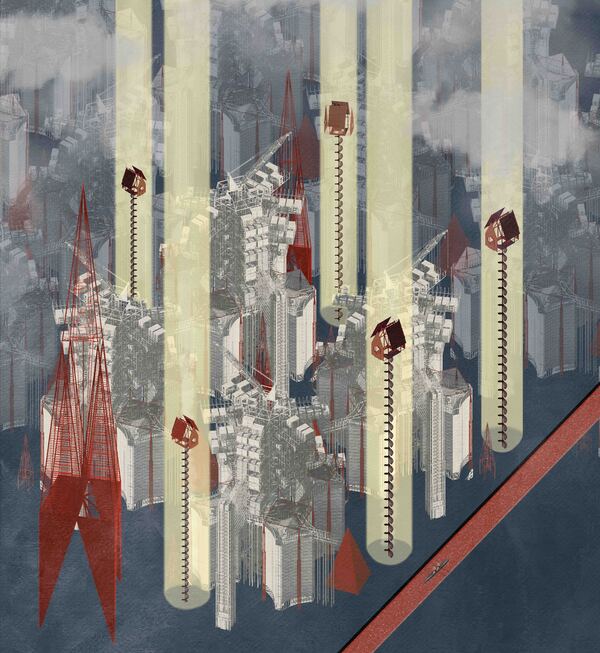Constructing Reality: The surreal reality of a hyper-normal housing crisis
What is the role of architecture in confronting the urban anxieties of an ever-concerning housing crisis?
Using Collyhurst as a microcosm of the housing crisis, the thesis questions whether architecture can truly be effective in addressing complex issues, testing the idea of aesthetic representation & narrative work as the key form of agency in architecture – drawing as a confrontational act. Blurring the lines between the physical and symbolic city, a series of spatial interventions form a built manifestation of tensions at play in the housing crisis, presented as an illustrated architectural tour of Collyhurst. Two parts form the story;
Firstly, the role of the architect and their complex relationship with housing, speculation & gentrification is manifested within the last maisonettes of Collyhurst. An intentional ruin, representative of the architect’s guilt, houses an architecture firm of two unrelated halves; 1) an AI driven server which creates and trades NFTs which represent ownership of Collyhurst units, and 2) the creation of designs for physical architecture. Property as pure investment is thereby created, where the representation of architecture bears no resemblance to built reality.
The second element focuses on the architecture designed within the firm itself. Faced with an increasingly privatised and unaffordable Irk Valley, an architectural conflict unfolds and the absurdity and humour in purely using architecture to address issues is revealed. Hostile architecture, in response to an ineffective and corrupt planning system, dot the landscape to physically prevent speculative developments. Skeletal megastructures form the basis of extreme modularisation while permanent cranes physically control the supply (and demand) of units, creating a minutely controlled monopoly. The interventions are absurd and surreal, yet in the current climate of an ever-worsening housing crisis, have an understandable logic underpinning them. This leads me to ask – are we really that far away from this in reality?


